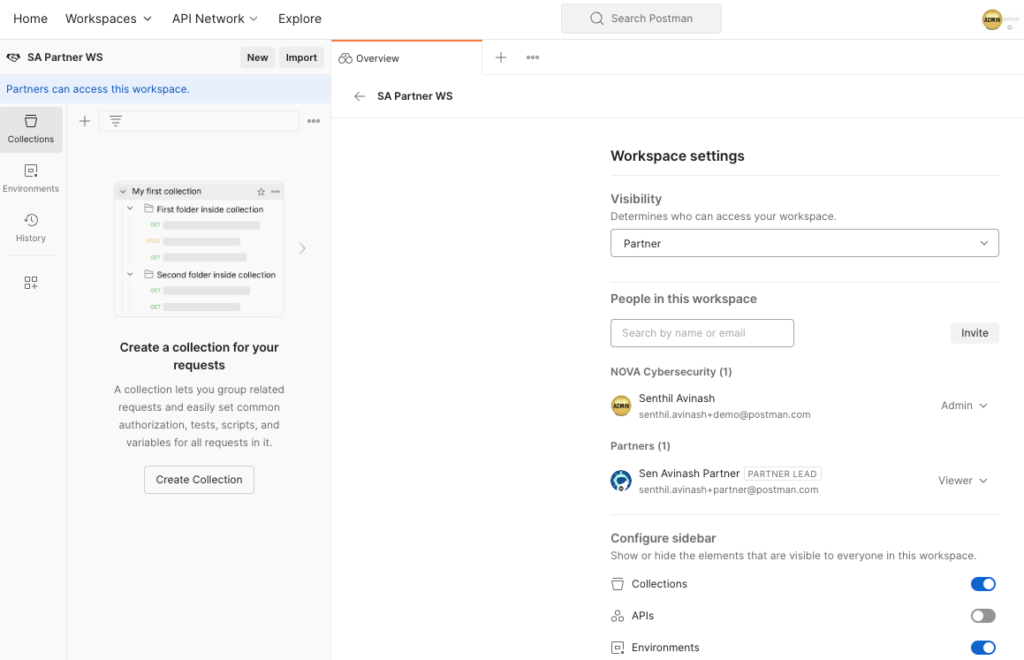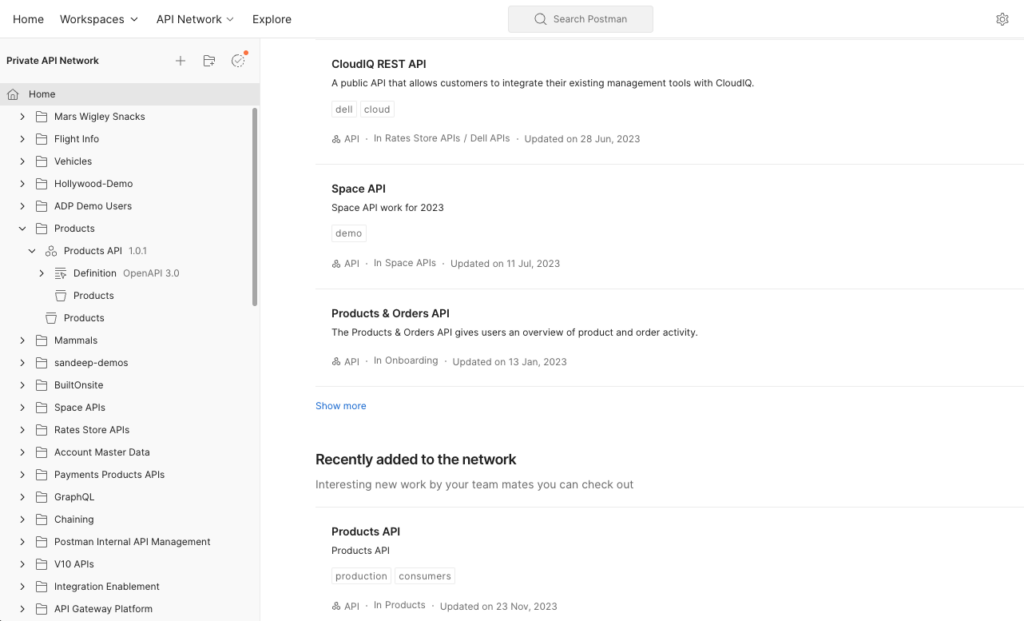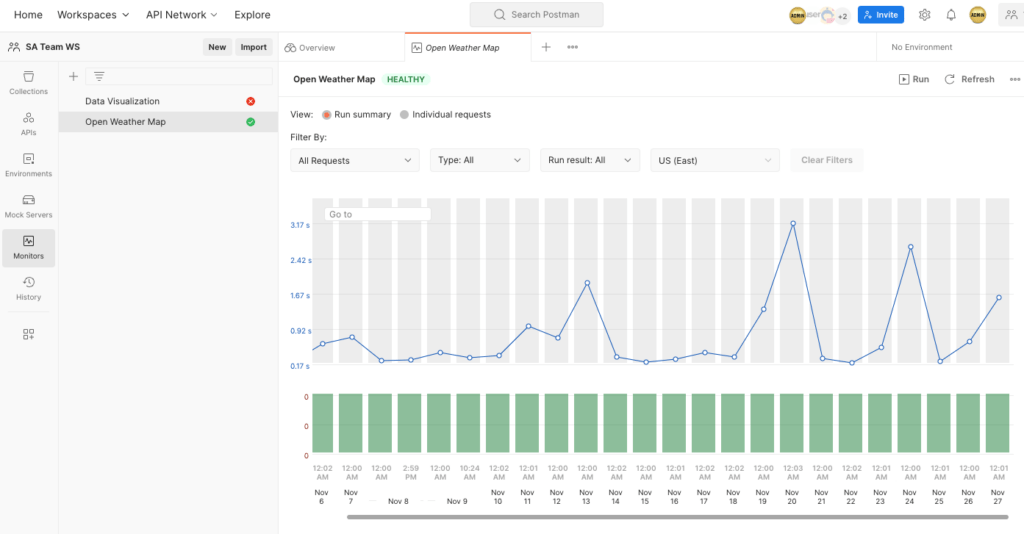How Postman enables P&C insurance carriers to improve their API workflows
Integrations are at the heart of every property and casualty (P&C) core system implementation. Insurance carriers need to integrate within their own core modules in order to perform actions such as fetching policy data for a claim or displaying billing information on a policy summary page. Just as importantly, they need to seamlessly integrate several third-party vendors and external systems into their core suite.
In addition, every core P&C system supports a rich set of RESTful APIs that need to be consumed by external partners and vendors. As P&C carriers start to wrap various business use cases within their own APIs, there is a natural tendency to move from a monolithic architecture to a collection of microservices that are modeled around specific business domains (such as first notice of loss, rating, and validation services). As these services grow and scale, P&C carriers need to focus on the consumption and reusability of their APIs.
In this blog post, I will highlight a few capabilities of the Postman API Platform that will enable any P&C carrier to vastly improve the developer experience of their core implementation, thereby enabling consumers to self-serve. This leads to a delightful customer experience for policyholders.
Partner Workspaces
Partner Workspaces enable you to collaborate with external partners directly in Postman. Let’s look at an example in which an insurance core system needs to integrate an external document production system in order to produce documents externally. The core system needs to pass the policy and claim XML through external document production APIs in order to render the document based on the preferred communication channel. This requires external partners to collaborate with the core system.
You can use Postman Partner Workspaces to invite external partners to consume your team’s APIs and work together on API projects. This capability enables you to build a single source of truth and integrate your partner projects into your Postman team, setting the foundation for an efficient and productive partnership. You can also configure roles and permissions to ensure that partners are able to view and modify the right API assets.
Partners can also work collaboratively with the core system’s implementation team to validate an external API. They can jointly write test cases directly within Postman, validate the results together, and test data accordingly. And whenever there is an update on the partner end, the carrier’s team can get notified and update the code accordingly to test the integration.
In addition, the partner and carrier’s development teams can write automation test cases together in Postman, which can then be integrated into a CI/CD pipeline. The ability to build proper automation test suites with your partner and get notified of any failures is crucial, especially if you work with multiple integrations whose health and functionality you must continuously validate. You can therefore set up any number of Partner Workspaces and invite the right partners to collaborate on your API assets.
Partner Workspaces are available in the Postman Enterprise Ultimate plan.

The Private API Network
As carriers continue to build more APIs in order to break their individual business use cases into product-specific functionalities, developers and end consumers must be able to quickly discover and reuse these APIs. Postman’s Private API Network provides a central directory of workspaces, collections, and APIs that your team uses internally. For instance, if a new claim-specific API has been implemented, it can be easily published to the carrier’s Private API Network for other internal teams to discover and consume. This single repository also enables the carrier’s development teams to quickly identify the internal services that are already available and the ones that still need to be created.
In addition, the Private API Network provides documentation directly alongside your API assets. Internal developers can quickly read through the API definition, understand each and every method invocation, and access sample requests and responses. There are also roles and permissions defined within Postman to control which assets can be published to the Private API Network. The person with the API Network Manager role will review requests and either approve or deny them.
The Postman Private API Network is available in the Enterprise plan.

Monitors
It’s important for insurance carriers to ensure their growing set of RESTful APIs meet quality standards while running flawlessly. Postman provides a convenient way to monitor the health and performance of these APIs: just create a Postman Collection from your API and assign a monitor to it. You can configure your monitor’s execution frequency, and you will then see the results of monitor runs at the scheduled interval. You can also configure email notifications and integrate the monitor to send notifications to your team’s Slack or Microsoft Teams channel.
Monitors are available with every Postman plan. Please consult with a member of the Postman Sales team to determine your best option.

Live Collections
Postman Collections provide a powerful and easy way to document, share, and test your existing APIs. But imagine you are building your core insurance application and you want an automated way to generate collections from all of your policy, billing, and claim APIs. With Live Collections, you can observe your application’s behavior while you are using it—and then build your collections. As the core suite evolves, so does the collection. You even have the option to turn off data sync for Live Collections if you do not wish to keep the collection in sync.
The most important benefit of using Live Collections with your core insurance suite APIs is the ability to analyze usage patterns of your existing API services, identify opportunities for optimization, and make changes accordingly. Live Collections are available for early access customers—join the waitlist.
Performance testing
Postman’s API performance testing feature provides a convenient way to simulate user traffic and observe how your API behaves under certain load and against carrier-specific requirements. This allows you to identify any issues or bottlenecks that occur around long-running transactions, which is especially useful when you have to test batch transactions that are tied to premium calculation, as well as any policy- or claim-related batch job.
Postman allows you to configure the duration of each performance test, as well as the number of virtual users. Each virtual user makes requests concurrently at a specified order in a repeating loop. You can then see the results of your performance tests, as well as key metrics—such as the average response time, error rate, and throughput—in real time.
Performance testing is available for Free, Basic, and Professional plans. Please contact our Sales team for more information about Enterprise availability.
Postbot
The last feature that I’m really excited to talk about is Postbot, Postman’s AI assistant. Postbot continuously learns from your request data in order to help you complete API development tasks. For instance, it can automatically create test cases, visualize responses in tables, charts, and graphs without any code, and write API documentation. You can also get help by asking Postbot a question directly. This feature is available as an add-on to Basic and Professional plans, and it will soon be available to Enterprise customers.
Conclusion
Together, these Postman features enable any P&C carrier to not only bootstrap their API implementation, but also successfully collaborate with external partners. These capabilities ultimately enhance your policyholder and claim experiences.

What do you think about this topic? Tell us in a comment below.